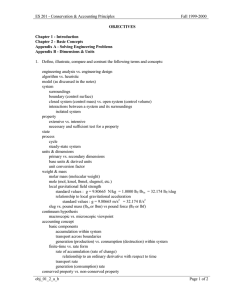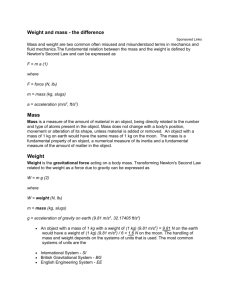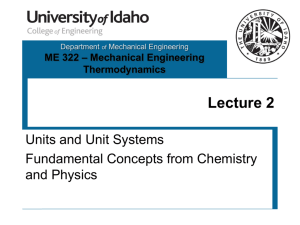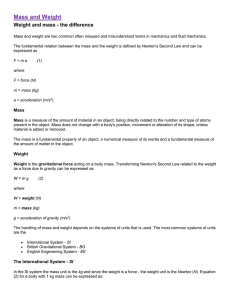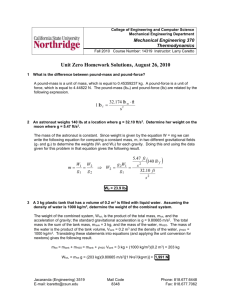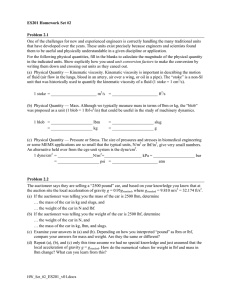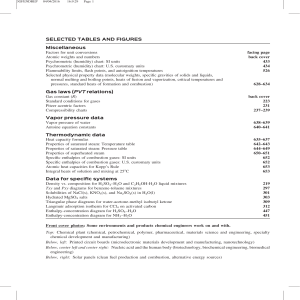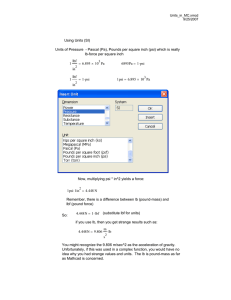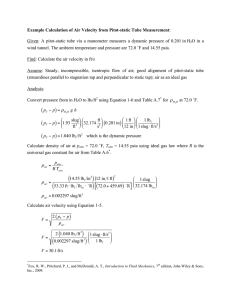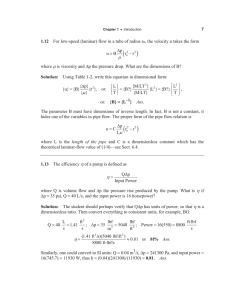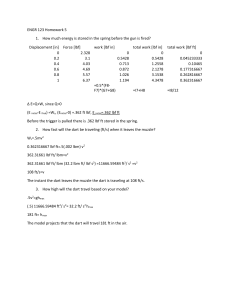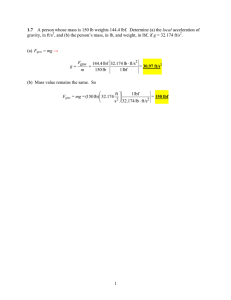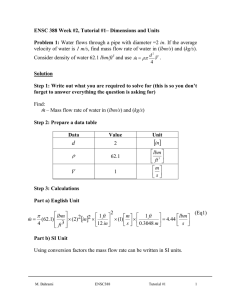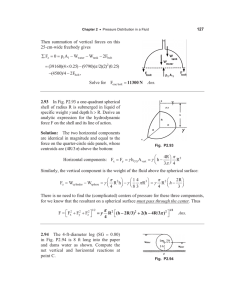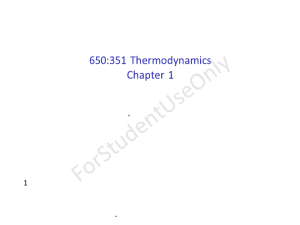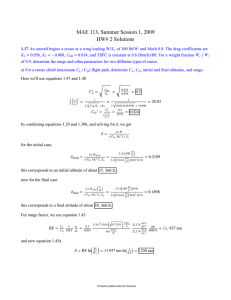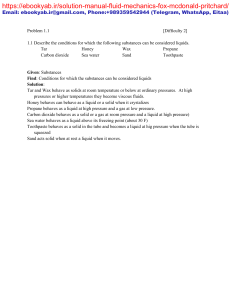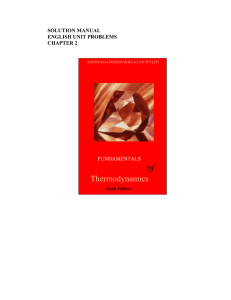Introduction, Basic Concepts, and Appendices A and B
advertisement
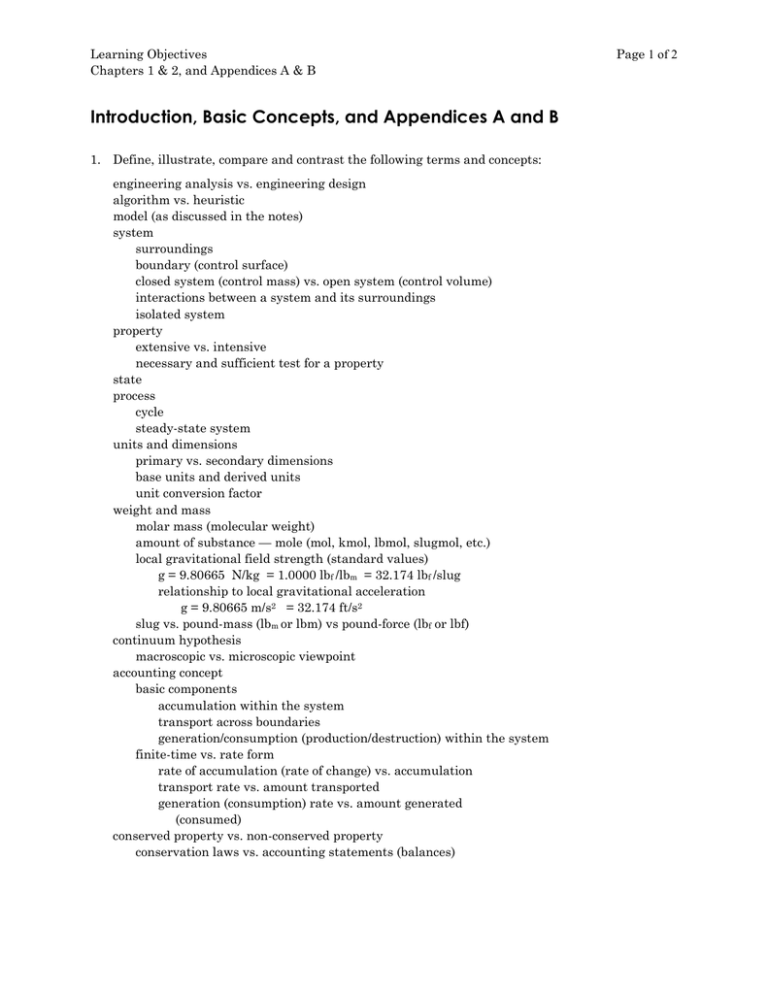
Learning Objectives Chapters 1 & 2, and Appendices A & B Introduction, Basic Concepts, and Appendices A and B 1. Define, illustrate, compare and contrast the following terms and concepts: engineering analysis vs. engineering design algorithm vs. heuristic model (as discussed in the notes) system surroundings boundary (control surface) closed system (control mass) vs. open system (control volume) interactions between a system and its surroundings isolated system property extensive vs. intensive necessary and sufficient test for a property state process cycle steady-state system units and dimensions primary vs. secondary dimensions base units and derived units unit conversion factor weight and mass molar mass (molecular weight) amount of substance — mole (mol, kmol, lbmol, slugmol, etc.) local gravitational field strength (standard values) g = 9.80665 N/kg = 1.0000 lbf /lbm = 32.174 lbf /slug relationship to local gravitational acceleration g = 9.80665 m/s2 = 32.174 ft/s2 slug vs. pound-mass (lbm or lbm) vs pound-force (lbf or lbf) continuum hypothesis macroscopic vs. microscopic viewpoint accounting concept basic components accumulation within the system transport across boundaries generation/consumption (production/destruction) within the system finite-time vs. rate form rate of accumulation (rate of change) vs. accumulation transport rate vs. amount transported generation (consumption) rate vs. amount generated (consumed) conserved property vs. non-conserved property conservation laws vs. accounting statements (balances) Page 1 of 2 Learning Objectives Chapters 1 & 2, and Appendices A & B Page 2 of 2 2. Given a sufficient set of unit conversion factors, convert the numerical value of a physical quantity given in one set of units to a different, specified set of units. 3. Explain in words the difference between the mass of an object and its weight. Demonstrate this understanding by applying the defining equation for weight, W = mg, and Newton’s second law, F = ma to solve problems involving weight, mass, and acceleration. Answers for mass, weigh, and acceleration must be given with appropriate and standard units. 4. List the seven components of the problem solving format (methodology for engineering problem solving), explain the significance of each part, and use the format correctly in your problem solutions. 5. Given a problem that can be solved by accounting for physical quantities or if you are requested to use the accounting principle, apply the accounting principle to solve for the desired information. Be sure to clearly indicate the system of interest, the property (or stuff) to be counted, and the time period of interest. Problems should be worked showing sufficient steps so that the method used is clear. 6. Give both a written and a symbolic statement of the rate form of the accounting principle and the finite-time form of the accounting principle. Clearly indicate the accumulation, transport, and generation terms. 7. Explain the mathematical and the physical difference between the "rate of accumulation (or change)" term and the "transport rate" and "generation/consumption rate" terms in the rate form of the accounting principle. 8. Given a list of physical quantities, determine which of them are properties and indicate whether they are intensive or extensive properties. Explain how you made your decisions.
